Few things are as delightful as watching your garden burst into color after a long winter. Whether it’s cheerful tulips in early April or vibrant lilies in midsummer, flowering bulbs are the secret to continuous, effortless beauty throughout the year. But one question confuses many gardeners: when should you plant your bulbs—fall or spring?
The short answer? It depends on the bulb.
Different bulbs have different biological cycles. Some need the chill of winter to bloom, while others prefer to wake up in warm soil. Understanding how bulbs grow, rest, and flower is the key to deciding the right planting season.
In this guide, we’ll explore how bulbs work, the pros and cons of each planting season, and which bulbs perform best in fall versus spring planting—plus expert tips for success no matter when you plant.
Understanding Bulb Basics
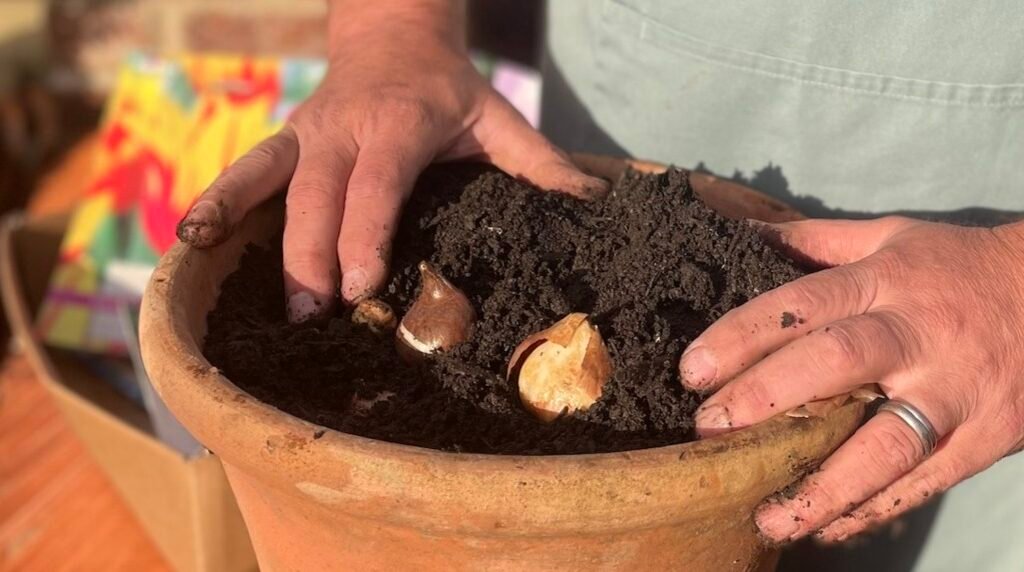
A bulb is essentially a self-contained plant waiting to grow. Inside that papery covering is everything it needs to sprout—leaves, stems, and flower buds—along with stored food.
Bulbs can be divided into two broad categories:
- Hardy (Cold-loving) Bulbs: These require a period of cold dormancy (chilling) to trigger blooming.
- Tender (Warm-loving) Bulbs: These can’t tolerate frost and grow best when the soil and air are warm.
This difference determines when you should plant them.
Why Fall Is the Best Time for Most Bulbs
For most flowering bulbs, fall is planting season. These bulbs—like tulips, daffodils, hyacinths, and crocuses—need a prolonged cold period to develop strong roots and flower properly in spring.
The Science Behind It
Fall bulbs are hardy perennials that have evolved to thrive in temperate climates. When planted in cool autumn soil (ideally 50–60°F / 10–15°C), they start developing roots before the ground freezes. Over winter, they go dormant, and the cold triggers biochemical changes inside the bulb that allow it to bloom once temperatures rise.
Without that chilling period (known as vernalization), many fall bulbs simply won’t flower—or they’ll produce weak, distorted blooms.
Best Bulbs to Plant in Fall
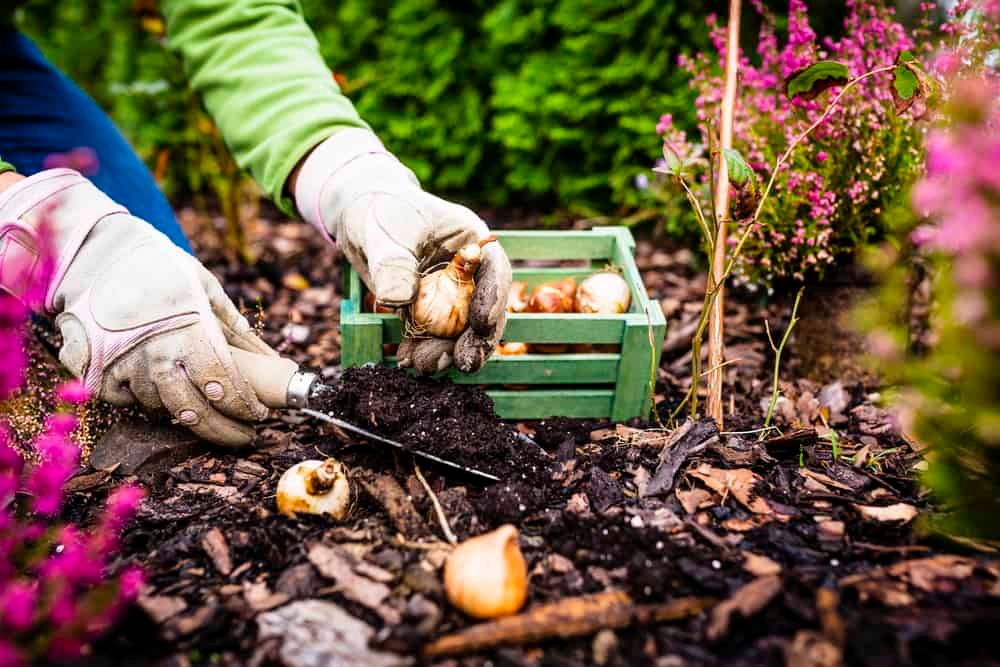
Here are some of the most reliable and beloved bulbs that should go in the ground before winter sets in:
1. Tulips
- Bloom time: Early to late spring (depending on variety)
- Why fall planting works: Tulips need 12–16 weeks of cold to bloom. Planting in fall allows enough root growth before frost.
- Tip: Plant 6–8 inches deep in well-drained soil and use a bulb fertilizer to support root growth.
2. Daffodils (Narcissus)
- Bloom time: Early to mid-spring
- Why fall planting works: Daffodils establish roots during winter and bloom early as soon as temperatures warm.
- Tip: These are among the most cold-hardy bulbs and will naturalize easily over time.
3. Hyacinths
- Bloom time: Mid-spring
- Why fall planting works: They rely heavily on a chilling period for their signature scent and color intensity.
- Tip: Plant in clusters for a strong fragrance impact.
4. Crocuses
- Bloom time: Late winter to early spring
- Why fall planting works: These small bulbs (technically corms) can bloom through melting snow.
- Tip: Plant in sunny spots or under deciduous trees—they’ll bloom before leaves shade them.
5. Alliums
- Bloom time: Late spring to early summer
- Why fall planting works: As hardy perennials, alliums overwinter easily and produce large, striking globe-shaped flowers.
- Tip: They thrive in well-drained soil and full sun.
6. Snowdrops (Galanthus)
- Bloom time: Very early spring (sometimes February)
- Why fall planting works: Snowdrops need cold dormancy and will often push through frost to bloom when little else is awake.
- Tip: Plant them in moist, humus-rich soil for best results.
Timing for Fall Bulb Planting
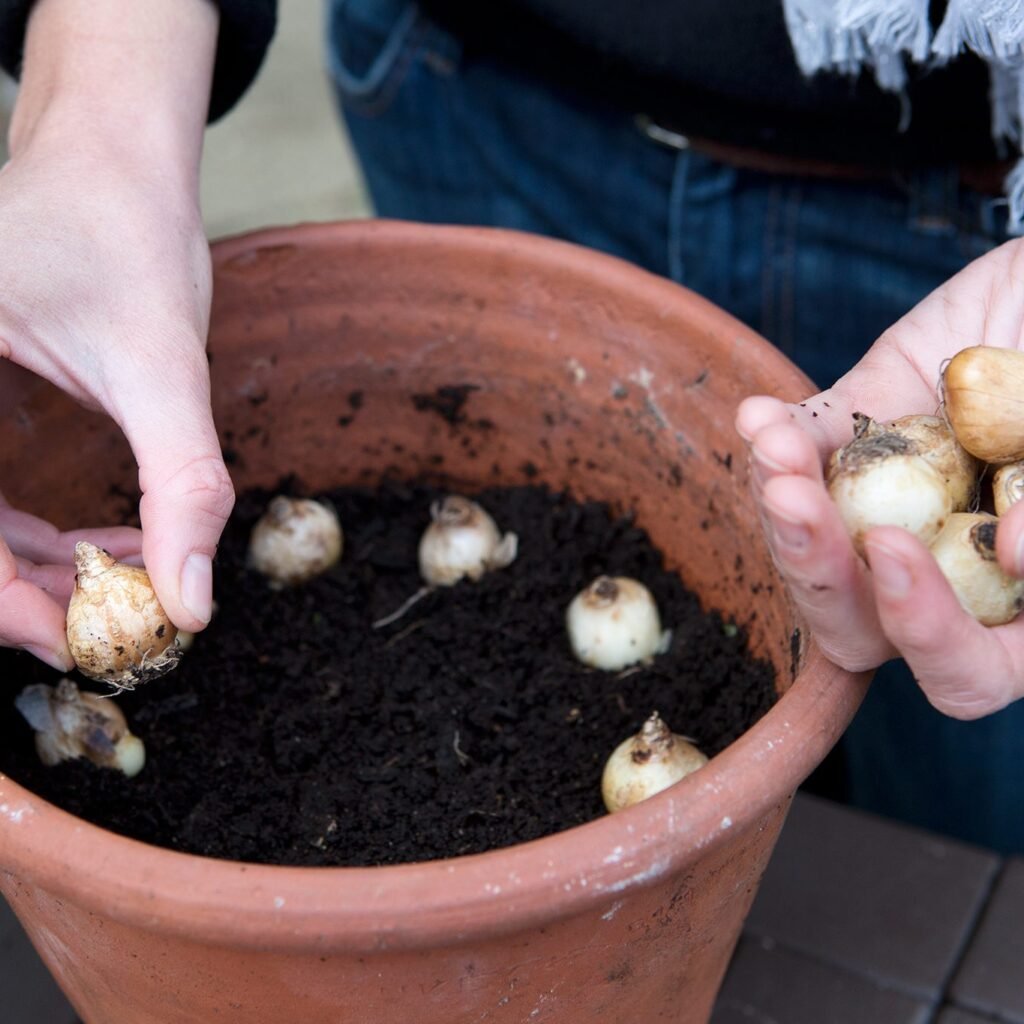
The ideal time to plant fall bulbs is 6 to 8 weeks before the ground freezes. This gives bulbs enough time to develop roots without prematurely sprouting.
- Cold climates (Zones 3–5): Late September to October
- Moderate climates (Zones 6–7): October to November
- Mild climates (Zones 8–9): November to December (chill bulbs in the refrigerator for 8–10 weeks before planting)
Avoid planting when the soil is soggy, as excessive moisture can cause bulbs to rot before winter.
How to Plant Fall Bulbs Properly
- Choose a sunny, well-drained site. Bulbs hate sitting in waterlogged soil.
- Dig holes 2–3 times as deep as the bulb’s height. For example, if your bulb is 2 inches tall, plant it 4–6 inches deep.
- Place bulbs pointed side up. That’s where the sprout will emerge.
- Add a light bulb fertilizer or compost. This boosts root establishment before dormancy.
- Water thoroughly after planting. Moisture helps trigger root growth.
- Mulch lightly. A thin layer of leaves or straw keeps the soil insulated and prevents heaving during freeze-thaw cycles.
Why Some Bulbs Should Be Planted in Spring
Not all bulbs can handle winter’s chill. Tender bulbs—those native to tropical or subtropical regions—will rot or freeze if left in cold ground. These should be planted in spring, after the danger of frost has passed.
They grow through summer, bloom in warm weather, and then die back before the next cold season. You can dig them up and store them indoors for replanting next year.
Best Bulbs to Plant in Spring
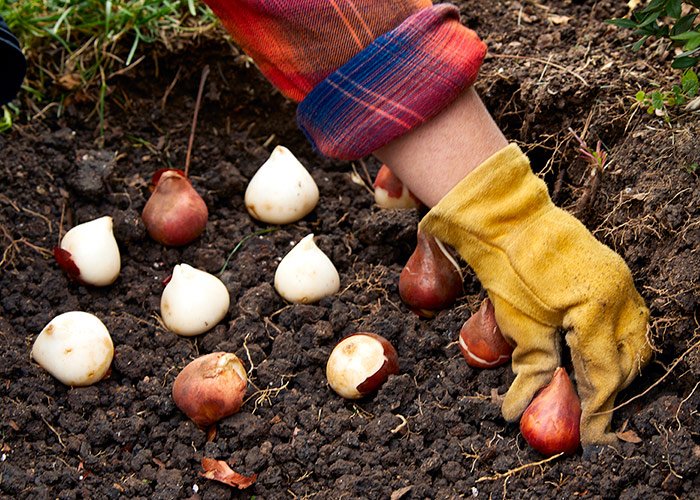
1. Dahlias
- Bloom time: Mid to late summer through fall
- Why spring planting works: Dahlia tubers are frost-sensitive and will rot in cold soil. Plant after frost for fast growth.
- Tip: Start tubers indoors in pots for an early bloom.
2. Gladiolus
- Bloom time: Summer
- Why spring planting works: These bulbs (technically corms) prefer warm soil and full sun.
- Tip: Plant in batches every two weeks for continuous flowering through summer.
3. Lilies
- Bloom time: Early to midsummer
- Why spring planting works: Although some lilies can be planted in fall, many varieties do well when planted in warming soil.
- Tip: Plant bulbs 6 inches deep in loose, well-drained soil.
4. Begonias
- Bloom time: Summer to early fall
- Why spring planting works: Begonias love warmth and consistent moisture but can’t tolerate cold.
- Tip: Start indoors 8 weeks before transplanting outdoors.
5. Calla Lilies
- Bloom time: Late spring to early summer
- Why spring planting works: These tropical beauties need warm soil and can be lifted in fall to overwinter indoors.
- Tip: Use rich, moist soil and partial shade for long-lasting blooms.
6. Cannas
- Bloom time: Summer to early fall
- Why spring planting works: Cannas love heat and humidity but won’t survive frost.
- Tip: In cooler zones, dig and store rhizomes indoors after the first frost.
Fall vs. Spring Bulbs: Quick Comparison
| Feature | Fall-Planted Bulbs | Spring-Planted Bulbs |
|---|---|---|
| Type | Hardy, cold-tolerant | Tender, frost-sensitive |
| Examples | Tulips, daffodils, hyacinths, alliums | Dahlias, gladiolus, calla lilies, cannas |
| Bloom Time | Late winter to spring | Summer to early fall |
| Cold Requirement | Needs chilling (vernalization) | Cannot tolerate frost |
| Lifespan | Often perennial, returns yearly | Usually annual unless stored indoors |
| Best Planting Time | 6–8 weeks before ground freezes | After danger of frost passes |
Tips for Success in Both Seasons
- Plan for continuous blooms: Combine fall and spring bulbs to ensure flowers from early spring through fall.
- Label your planting areas: Use markers to avoid accidentally digging up bulbs in the off-season.
- Amend your soil yearly: Add compost or bone meal to nourish bulbs before planting.
- Mulch wisely: In both seasons, mulch helps regulate temperature and retain soil moisture.
- Don’t forget drainage: Standing water is the number one cause of bulb rot.
Can You Plant Fall Bulbs in Spring (or Vice Versa)?
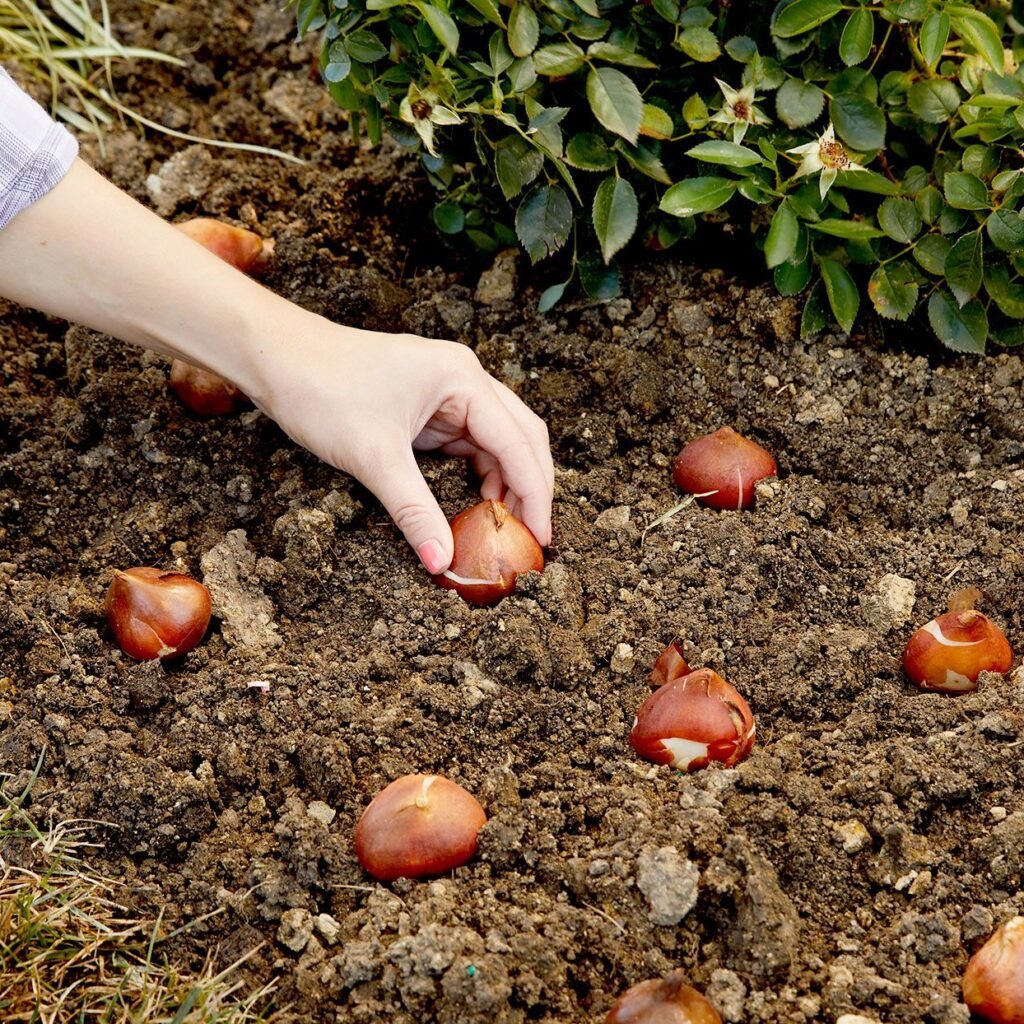
If you miss the ideal window, don’t despair.
- Fall bulbs in spring: You can try pre-chilling them in your refrigerator for 10–12 weeks, then plant immediately. They might bloom later or the following year.
- Spring bulbs in fall: Only if you’re in a frost-free region (Zones 8–10). Otherwise, dig and store them indoors through winter.
Final Thoughts
Whether you plant in fall or spring depends on the type of bulbs you choose and the climate you live in. Fall bulbs—like tulips, daffodils, and hyacinths—need the chill of winter to bloom beautifully in spring. Spring bulbs—like dahlias, gladiolus, and cannas—thrive in warmth and deliver bold, tropical color through summer.
By learning your bulbs’ natural cycles, you can plan a year-round garden full of seasonal color and texture. Imagine early snowdrops peeking through melting snow, followed by waves of tulips, and then bold summer lilies—each season handing off to the next in a continuous parade of blooms.
The secret to that seamless beauty? Planting the right bulbs at the right time. With a bit of planning now, your garden will reward you with breathtaking color, no matter the season.
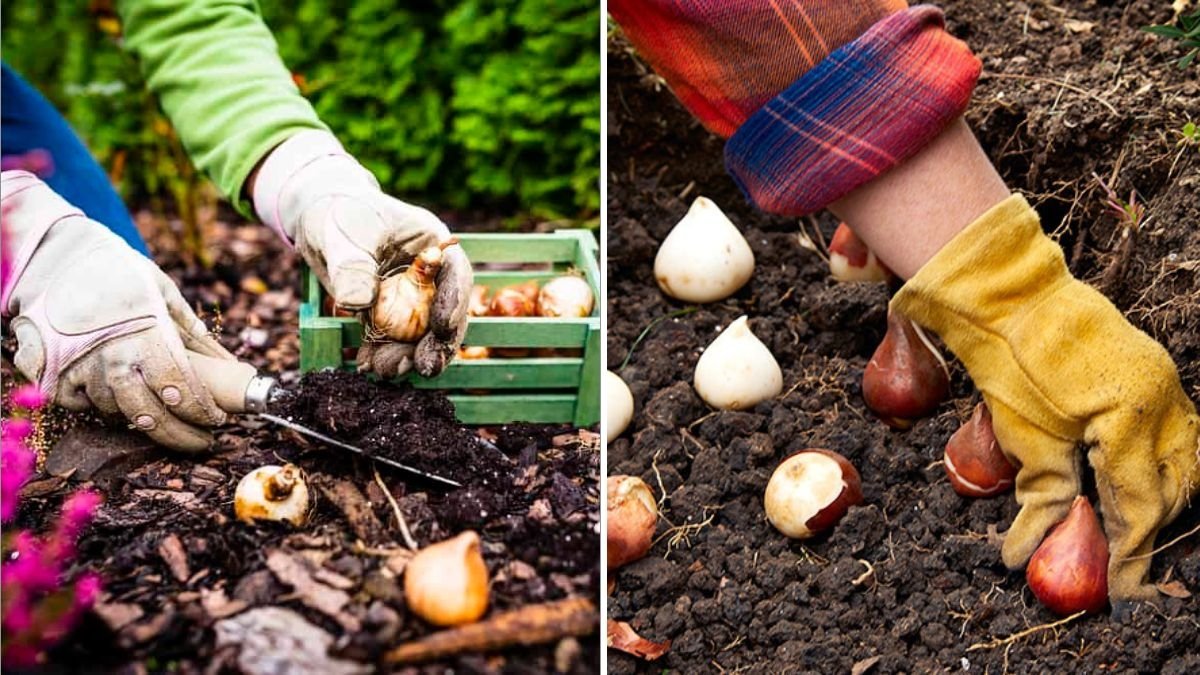
Leave A Comment